
Image Source.
Messenger flew by Mercury last week, and photographed vast swaths of terrain that, until now, had never been seen. The new landscapes, as expected, are cratered, barren, and utterly moonlike. The galaxy could contain a hundred billion planets that would be hard, at first glance, to distinguish from Mercury, and within our cosmic horizon, there are probably of order as many Mercury-like worlds as there are sucrose molecules in a cube of sugar.
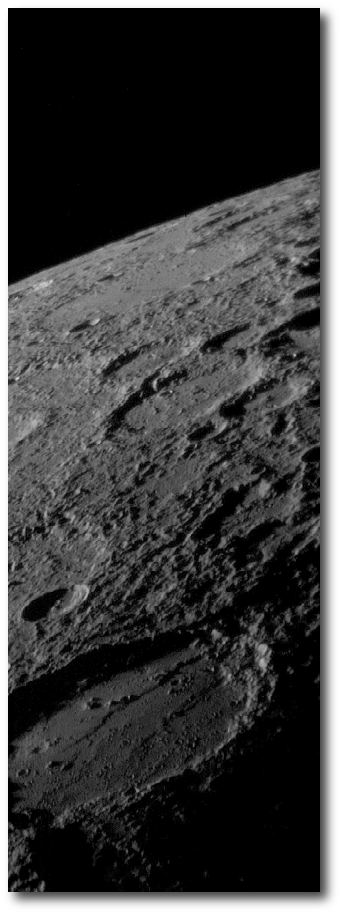
Image Source.
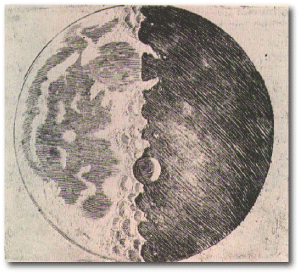
Nevertheless, we do gain something extraordinary whenever a new vista onto a terrestrial world is opened up. Galileo was the first to achieve this, when he turned his telescope to the Moon and saw its three-dimensional relief for the first time. Mariner 4 and Mariner 9 accomplished a similar feat for Mars. The Magellan spacecraft revealed the Venusian topography. And once Messenger has photographed the full surface of Mercury, there will be a profoundly significant interval before we get our next up-close view of an unmapped terrestrial planet. My guess is that it’ll be Alpha Centauri B b.
The Messenger website is well worth a visit. I was particularly struck by the movie that the spacecraft made of the Earth during the close fly by of March 2005. During the course of 24 hours, the spinning Earth recedes into the black velvet distance and space travel seems like the real thing.
Mercury’s orbit, with its 88 day period and its eccentricity of 0.2 could slip unnoticed into the distribution of known exoplanets. It’s vaguely comparable, for example, with the orbit of HD 37605 b. This Msini=2.3 Mjup gas giant has an apoastron distance similar to Mercury’s, but dives much closer to its star during periastron.
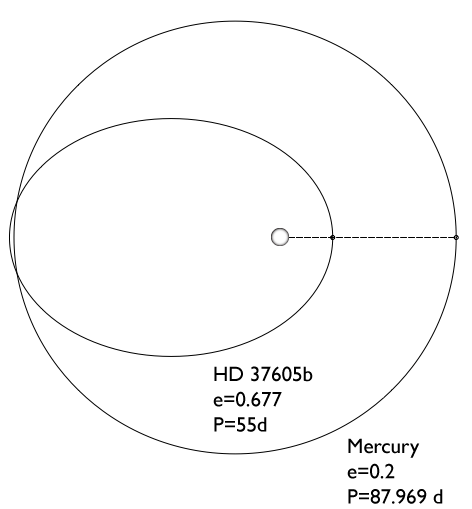
We’ve been interested in HD 37605 b lately because its orbit dips in and out of the insolation zone where water clouds are expected to exist. At the far point of the 55 day orbit, it should be possible for white clouds to form out of a clear steamy atmosphere. At close approach, the clouds are turning to steam.
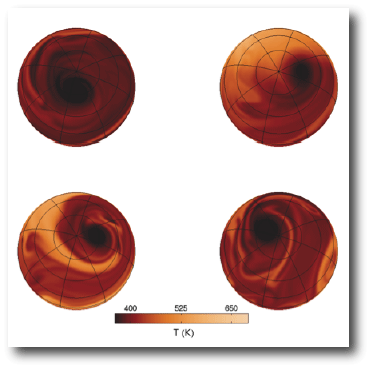
Jonathan Langton’s models for this planet show persistent polar vortices, which sequester cooler air, and which may remain cloudy even during the hot days surrounding periastron. The vortices are tenaciously long-lived, and tracer particles seeded into the vortices leak out only slowly. It would be interesting to know what sort of chemistry is brewing in the steamy hothouse environment of trapped and noxious air.
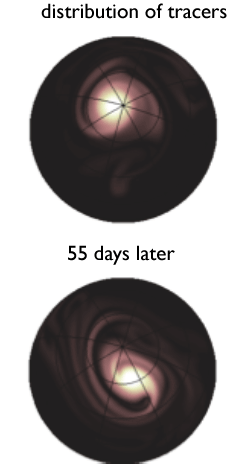

“And once Messenger has photographed the full surface of Mercury, there will be a profoundly significant interval before we get our next up-close view of an unmapped terrestrial planet.”
That’s an evocative sentence! But what about the outer solar system? A terrestrial planet is one that is rocky, and Pluto and Eris are not considered to be terrestrials because they are thought to be composed mostly of ices, right? Do any models predict a rocky planet in the outer solar system? Could a rocky planet form in the inner solar system and then be thrown into a more far flung orbit (as opposed to being thrown out of the solar system entirely)? On a related note, I’ve read that some models predict that a planet as large as Mars could still be eventually found in the outer system (either to account for worlds flung outward, or to account for the “Kuiper cliff”) If such a large planet was found, would it necessarily be icy, or could it be terrestrial?
By “terrestrial planets” I did indeed have in mind rocky bodies that form within the ice-lines of a protoplanetary disk. We’ll certainly have a high-resolution views of Pluto and Charon well before we see the surface of Alpha Cen B b.
It is possible for a terrestrial planet to be lofted into an Oort cloud-like orbit. There could easily be a few lunar size objects out there that were delivered during the late accretion phases of solar system formation.
I wonder how many terrestrial planets have massive cores like Mercury, and whether there are actually “iron planets” out there which have lost their silicate mantles.
Pingback: Centauri Dreams » Blog Archive » From Mercury to Centauri B
Pingback: Carnival of Space, Week 38 — The Adventures of Shorty Barlow, Private Eye | Sorting out Science